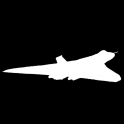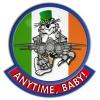Horten Ho.229B (Superwings Series No.24)
1:32 Zoukei-Mura
The Horten brothers were a pair of visionary siblings that designed a series of flying wing gliders in pre-WWII, during the period when Germany was prohibited by the terms of the Versailles Treaty from having an air force. Each design improved upon the last, and once the Luftwaffe broke cover in the Nazi regime’s expansionist phase before WWII, development began in earnest. The requirement in 1943 for a light bomber capable of the 3x1000 by the RLM, which was for an aircraft capable of carrying 1,000kg over 1,000km at 1,000kph set the wheels in motion that resulted in the Horten.IX, which is better known as the Ho.229, and is sometimes referred to as the Go.229 due to the fact that the Gothaer factory had been chosen for manufacturing of production examples.
The flying wing had a low drag form, and the addition of two semi-embedded jet engines gave it the potential to fulfil the requirement, although it suffered a little from lateral instability due to its sleek shape. The first prototype flew un-powered and with fixed landing gear in 1944, with results that bore plenty of promise before crashing at the end of the flight due to a pilot error. Gotha altered the design in practical ways to ease production and increase longevity, as well as adding an ejector seat that was probably as much of a danger to the pilot as being shot down was. Another prototype was lost due to an engine fire, but this did not deter the RLM from striving to reach production, despite the worsening situation for Germany in Europe. A two-seat variant was considered for training and night fighter operations, but it never progressed further than a tubular framework rendering of the fuselage at the time the war ended, so details are limited and informed speculation plays a large part. The third prototype (V3) was an enlarged single-seater, and it was this that fell into the hands of the advancing US troops, and subsequently the Operation Paperclip team, who transported it to America with a host of other advanced designs that had been captured. It remains there to this day, in the restoration area of the Smithsonian's NASM, and you can see some stunning photos and interesting text on their mini-site. Hopefully one day we’ll see it restored, or at least see a replica that is true to the original design.
The Kit
It’s incredible to think that the original Ho.229A kit from Zoukei Mura (ZM) was released in 2014, and I’m still grateful that a pal of mine stood in to the queue at Scale Model World that year so I didn’t miss out while I was stuck queuing to get in. It’s eleven years since then, and much has happened in the modelling world and beyond, and yet here we are again with another 1:32 kit of the enigmatic and graceful Horten flying wing. This boxing includes all the parts of the original 2014 release, so from the box you can build either a single- or two-seater Ho.229 from the same box. That means that if you missed out on the original, you can remedy that without issue, other than wanting a second kit to build the unused option. The kit arrives in a similar-sized box that has the same footprint as the original, but is 2cm deeper to accommodate the additional sprues that have been added. The format is the same as the original, with a technical feel to the package that goes beyond a typical model kit and hints at model engineering, which is furthered by the skeletal internal structure that is typically present on ZM kits. The box art shows a two-seater night fighter in grey mottle fresh from a victory over a Lancaster bomber, the latter descending in flames as the Horten peels off to stalk its next target. Although this sort of incident would have been common in the skies of Germany toward the end of WWII, fortunately for the RAF and USAAF bomber crews, the 229 was too late to take part. Detail is exceptional as we expect from ZM, who specialise in making the modelling process a special event for anyone building their kits.
The box is a top-opener, with a captive flap on the lower tray to further stiffen the box, and inside is a C-shaped divider that separates it into two identically-sized compartments that keep the sprues apart and prevents chaffing along with the individual clear film wrapping of the sprues. We mention this because many of the exterior skin parts are clear, that would be easily marred by poor packing and storage, so it is doubly important to keep everything crystal clear and undamaged, especially if you intend to depict your model with clear surfaces to show off the interior details. The instruction booklet is a weighty tome printed on heavy-stock matt paper with a red-brown theme reminiscent of primer red, and faux-official stamps giving the impression of authenticity to proceedings. There are ten clear sprues of varying sizes, which includes some stunning slide-moulded fairings for the nose and tail-nib, to single out just a few of the high points. There are also thirteen sprues in light grey styrene, most of which are half-box sized, and in a separate bag are two large decal sheets, one for each variant, and a sheet of pre-cut pale-green vinyl masks (not pictured). The final inclusion is a folded A3 sheet of glossy paper that has a full catalogue of their products printed in colour on both sides, covering both their 1:32 and 1:48 ranges.
Construction begins with some choices, the largest of which is whether to build the original single-seat V3 variant, or the new two-seater B option, which is likely to be your first choice if you’ve got both variants, or have a thing for night fighters like I do. If you’re familiar with ZM instruction booklets, they can appear a little overwhelming on first look, but once you zoom in on each step, the complexity melts away and they’re very clear. They also give a lot of information to assist you with building and painting, there are names given to identify most major assemblies, and there are often photos of completed assemblies to help you get your model looking somewhere near to their example. The first few pages give background information on the type, then you must choose, with page numbers given to assist you with your chosen option throughout the build. If you’re prone to forgetting things like I often do, it may be sensible to put a line through any steps that aren’t required to help you focus.
The build process begins unusually with the two Jumo 004 engines, which have a full suite of eight rows of compressor blades along the central shaft just like the real thing, trapping them, between the forward engine housing after adding the half-moon static blades within the shell first. Each pair is different, with much to be installed in strict order, and care will be imperative if you hope to install the turbine shaft, as the cut-outs in the static blades match the shape of the hubs. The intake bullet is a two-part assembly with the front compressor face added to the rear, which is then trapped between a pair of cowling parts split vertically, plus another pair split horizontally in front of those, forming the inner intake lip. The exhaust has two final phase rotors attached to a spacer, which is in turn glued to a set of stator blades, and finally the rear bullet is put in place. The engine shell is then completed by adding a ring to the back of the compressor phase, linking the exhaust assembly to the rear of the turbine shaft, and lastly enclosing the shaft and part of the exhaust assembly in more cowling that joins horizontally. The outer casing can then be painted up as per the photo instructions. A lot of ancillary equipment comes with a jet engine, and ZM have not skimped on parts here. There are a heap of parts utilised in completing the engine, and painting call-outs accompany them throughout. The final part of the first phase is to add the lower heat shields to the aft portion of the engine, which prevented the heat from damaging the combustible wooden skin. These are provided in crystal clear styrene, so that your work with the engines can be seen from the gear bays. As an option, you can cut some square sectioned parts from the sprue runners, and build them up into a trestle for one or both engines either to display them away from the aircraft, or to keep them safe while you finish off the build. An ingenious use of the otherwise wasted plastic of a sprue.
Act two sees the building of the fuselage, which comprises a tubular framework that is very well depicted, starting with the longer two-seater variant. The lower frame is built up first after removing the foremost tubular-section, to act as the base on which the rest of the fuselage is built, and again you should paint this up as you go, due to the complexity of the finished article. The wing root formers are added to the extreme left & right of the fuselage frame, at which point it starts to look a bit like a Ho.229 for the first time. Various linkages and controls are added, reaching the forward fuselage to be integrated with the cockpit, which is built up later. The cannons and their ammunition feeds are added inboard of the wing joint, after which the engines are slotted into the lower fuselage assembly and held in place by the addition of the upper framework, so again – keep painting as you go along, or you'll regret it. Fitting this part properly is critical, and takes up two pages of the instructions, showing where it should locate several times from different angles. Another page is devoted to showing the finished article in picture form, which should give you the impression that if you err, you will struggle fitting the outer skin, so take care, test-fit and do it right the first time. The single-seater sees you skipping ahead to page 29 of the booklet, and whilst the majority of the process looks very similar to the new version, there are different parts, the section removed for the two-seater is left intact, and the guns aren’t fitted on this V3 prototype.
The cockpit section helpfully shows a photo of both options one above the other, showing the differences clearly along with the pages that you will need to refer to when building you choice. The two-seater has the rudder bar split into separate L-shaped parts, adding the rudder pedals to the ends of the lower brackets, fitting each one to its respective side-console, which is further detailed by fixing instruments, levers and so forth, detail-painting it as you go. You have a choice of a styrene instrument panel or a clear part, using the same decal or decals either on the faces of the instruments, or on the backside of the clear part to give the impression of dials under glass. The two side walls with their consoles are brought together on either side of the new floor, trapping the panel in place, then installing the control column, and the two-part rear-seater’s console after detail-painting it and applying more dial decals. The completed assembly is shown being lowered into position in the fuselage from several views, carefully aligning the pins and receptacles that hold it in position. ZM took a view that the two-seat cockpit would be a more deliberate affair to separate the crew from the heat and noise of the engines and guns, hence the style of assembly, which is substantially different from the single-seat cockpit of the V3 that is a simple contraption suspended between the framework of the fuselage, followed by another page of photos of the built and painted cockpit in place.
The fuselage is covered in translucent outer panels to the framework. You will need to decide what to do about them around this stage, and choose whether to model it with a "ghost" skin, partially paint it, or go the whole hog and paint it completely. Of course, you could also go the extra mile and depict your 229 unpainted using some wood effect decals where appropriate, or do it yourself with oil paints used to depict the grain. The nose cone for the V3 is a work of styrene art, having been slide-moulded as one piece that incorporates the nose, engine intakes, forward cockpit sills and the outer fuselage leading edge. The two-seat nose cone is necessarily longer, and has a pair of trunk extensions cemented behind the intakes, fixing a thick piece of clear glazing in front of the pilot to protect him from incoming rounds during combat. It has a two-part underside terminating in the pen-nib fairing at the rear, deciding whether to deploy the four spoilers by using their moulded-in actuators, or cutting them off to fit flush with the outer skin. Scrap diagrams help by showing correct alignment of both options, then the upper fuselage is applied over the top along with a pair of clear engine covers that can be glued down or left loose to show off the engines, and could be adapted with tiny magnets if you wanted to avoid losing them over time. For the single-seater, the lower fuselage skin is made up of three main parts, which fit onto attachment points moulded into the bottom of the fuselage framework, so care and careful gluing is the order of the day, especially if you are leaving any of the panels unpainted, fitting the airbrakes and their actuating rams in the same way as the 2-seat. The V3 upper fuselage comprises a single large upper piece and different crystal-clear engine cowlings that allow you to show off one or both of your engines in the same way as the 2-seater.
As usual with the wings of a ZM kit, there is a simplified version of the internal structure in the shape of ribs and stringers that give the wing stiffness and allow the suspension of ancillary equipment within the framework, and they are the same for both options. The main internal structure is a single moulding, to which is added a more detailed inner end-profile. A set of four fuel tanks are added into the mid and leading edge of the inner two-thirds of each wing, and a single piece depicting the actuating mechanism for the outer flying surfaces. At this point you'd be forgiven for thinking that you should add the skin to the wing, but instead you attach the wing structure to the fuselage using a quartet of pegs for each one, each of which is moulded to a small square of outer-skin. A couple of small interior detail parts glue directly to the lower wing interior before it is added, and then you fit the top wing, encasing the innards forever. All the control surfaces are poseable, with elevons along the trailing edge, the inner sections of which also act as flaps. On the top and bottom surface of the wing tips are the drag rudders, a set of two-section spoilers than allow lateral direction change. Each one plugs into a slot in the top and underside of the wing skins, and can be posed closed by cutting off the actuators and gluing them flush with the outer skin. Several scrap diagrams are there to help you get them sitting correctly, as well as a couple of photos of the finished article in the deployed position.
Finishing the model depends on which option you have chosen, differing substantially for the two-seat night fighter with its extended nose and radar. First are the common parts, starting with the nose gear bay doors that are fitted on either side of the bay, hanging vertically to the ground, followed by the main gear doors, both captive to the main strut, the upper door held away from the leg by a support jack, the correct angle shown in scrap diagrams. A pair of small inner doors separate the bays with one V-shaped part, and drag chute compartment doors behind the gear bay are fitted, adding an antenna to a hole in front of the main bays. Finishing the cockpit involves building a pair of ejection seats that both consist of the main seat-pan with a choice of moulded-in belts or bare, surrounded by a two-part frame and an optional head rest, noting the detail-painting instructions in a scrap diagram to the side. The pilot’s panel has a clear gunsight installed in a central slot, then the seats are fitted in the two compartments in preparation for adding the canopy, which is a large clear part with a separate framework underneath, posing it open or closed by reference to the scrap diagrams nearby. Wingtip lights are inserted in triangular cut-outs in the wings, adding a pitot probe to the port side, D/F loop on the spine, gun barrels outboard of the engine intakes, and a clear landing light on the nose gear leg. The last step is to add the delicate antennae for the Fug.220 Lichtenstein radar, which are provided as four complete parts that minimise alignment issues, although you are still given plenty of scrap diagrams to ensure everything is neat and tidy, one of which shows the painting and decaling of the integrated dipoles, some of which are covered in red/white stripes, with decals on their supports. The V3’s final assembly differs by making just one seat, with the same choice of moulded-in belts or not, and optional headrest. The canopy is smaller, and consists of a short curved clear part with the aft fairing and central frame glued to the rear, or a simple one-part clear option if you don’t like having to glue clear parts to styrene. Both options are mounted over the styrene frame, which has a guide added beneath, and the windscreen is glued in after adding the gunsight. The seat is installed, posing the canopy open or closed with the help of the nearby diagrams, then fitting wingtip lights, D/F loop, pitot probe and gun barrels as per the two-seat option.
Markings
There are two new decal options on the sheet for the new two-seater, and the original decals have been replicated for those that wish to build the original V3 airframe that adheres more closely to the reality of what was built during the last days of WWII. From the box you can build the following:
Ho.229B Red 12
Ho.229B Red 8
Ho.229A-0, White 14, ISS I./JV44, German Mainland, Oct.1945
Ho.229A-0 JG.301 German Mainland, Sept.1945
The decals have been designed by Radu Brinzan for Zoukei Mura, and they are printed anonymously to the highest standard. Sharpness, colour density and registration are excellent, and the matt carrier film is cut close to the printed areas except where necessary to prevent them from folding up on themselves during application.
Conclusion
There was a time when dreaming about a 1:32 mainstream injection-moulded kit of the Ho.229 was considered unlikely to come true, but it did. Now the range has widened again with a two-seat variant that has been tooled to the same high standards as the original boxing from Zoukei-Mura. Coupled with the option of building the original V3 option from the same box, this represents an excellent option for the larger-scale modeller.
Very highly recommended.
Available soon from your favourite stockist of high quality model kits worldwide
Review sample courtesy of


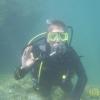


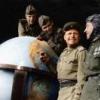
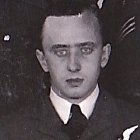





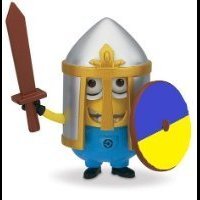
.thumb.png.03cf829e3ab23b3f04fe2590dd61bc3c.png)


